DRAFT
Tips etc / How to Get Great Deals on Fine Wine.
i would generally suggest against buying super-value wine
Recycle:
Information on the bottling (or packaging) facility must be reported on the prooduct labeling,
The table
The 2.5x multiplier represent an extremely lean distribution chain and 4.5x represent a more expensive, or a very margin-inflated, distribution and marketing chain.
More to the price points, at DFW we trade our Fine Wine with suggested retail price ranging anywhere from $15 to $100+ per bottle (and we also deal with rare, vintage and collector's bottles that are sometimes traded at more than $1,000 a piece).
Ultimately, this is all intended to inform our current and prospective customers about the Delfino Fine Wines approach to the trade from a price standpoint.
Finally, the grape costs charged/incurred in the US can also be safely considered as bounding production costs abroad.
look for deals promotions of 'past' vintages liquidated
white and red wine have different costs
More to this point, $20-$40 is the 'normal' entry level pricing range for reputable, good, perhaps unpretentious Fine Wine; $40-$80 is distinctively another level up, but especially limited to industry recognition - see the next bullet as well. And really, ultimately, all of the above is just a reference, to be taken with some grain of salt, too.
National Pinot Noir Day
Title: Celebrating Pinot Noir National Day: A Toast to the Quintessential Red Wine
Introduction:
Every wine enthusiast knows that there are certain grapes that command a special reverence, and Pinot Noir is undoubtedly one of them. Elegant, complex, and beloved by connoisseurs worldwide, Pinot Noir holds a place of distinction in the world of wine. So, it's only fitting that such a noble grape has its own day of celebration – Pinot Noir National Day. Let's raise our glasses and delve into the allure of this remarkable varietal.
The Origins of Pinot Noir:
Pinot Noir's origins can be traced back to the Burgundy region of France, where it has been cultivated for centuries. Revered for its ability to express terroir with finesse, Pinot Noir is notoriously finicky to grow but rewards vintners with wines of unparalleled complexity when tended to with care.
Pinot Noir's Influence:
While Burgundy remains the spiritual home of Pinot Noir, this grape has found success in wine regions around the world. From the cool climates of Oregon's Willamette Valley to the rugged landscapes of New Zealand's Central Otago, Pinot Noir thrives in diverse terroirs, each imparting its own unique characteristics to the wine.
Tasting Notes:
Pinot Noir is often described as the "heartbreak grape" due to its delicate nature and the challenges it presents to winemakers. However, when crafted skillfully, Pinot Noir offers a sensory experience like no other. With its enticing aromas of ripe red berries, earthy undertones, and silky texture, Pinot Noir seduces the palate with every sip.
Food Pairings:
One of the joys of Pinot Noir is its versatility when it comes to food pairings. Its bright acidity and silky tannins make it a natural companion to a wide range of dishes. From classic pairings like roasted duck and wild mushroom risotto to unexpected matches like grilled salmon and even certain types of sushi, Pinot Noir's ability to complement and enhance flavors is unmatched.
Celebrating Pinot Noir National Day:
On Pinot Noir National Day, wine lovers around the world come together to celebrate this iconic grape. Whether you're savoring a bottle of aged Burgundy or exploring a new vintage from an up-and-coming wine region, take this opportunity to toast to the magic of Pinot Noir and the artistry of the winemakers who bring it to life.
Conclusion:
Pinot Noir National Day is more than just a day on the calendar – it's a celebration of craftsmanship, terroir, and the enduring allure of one of the world's most beloved grapes. So, whether you're a seasoned oenophile or just discovering the joys of wine, raise a glass to Pinot Noir and let its elegance and complexity inspire you to explore the world of wine further. Cheers!
Bubbles, Bling, and Beyond: A Celebration of Elegance
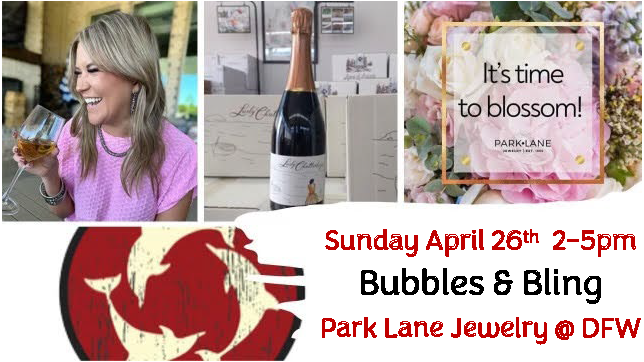
In the realm of celebrations, few things evoke the sense of elegance and delight quite like bubbles and bling. But what if there was a way to take this experience to the next level? Join us as we explore the enchanting combination of bubbles, bling, and the allure of an upcoming event at our winery.
The Allure of Bubbles:
Sparkling wines have an innate ability to infuse any occasion with festivity. Whether it's the refreshing crispness of a Brut Champagne, the playful effervescence of a Prosecco, or the velvety richness of a Blanc de Blancs, each sip promises a celebration in itself. And when paired with delectable sweets, the experience becomes a symphony of delight for the senses.
The Glamour of Bling:
In the world of fashion, bling reigns supreme as the ultimate expression of elegance and sophistication. From classic diamond necklaces to statement cocktail rings, the right piece of jewelry has the power to elevate any ensemble and leave a lasting impression. That's why we're thrilled to announce a special showcase featuring exquisite jewelry from Park Lane at our winery this Sunday.
Bubbles, Bling, and Beyond: A Celebration at the Winery:
Join us this Sunday for an event that promises to be nothing short of extraordinary. As you peruse the stunning selection of jewelry on display from Park Lane, you'll have the opportunity to try on your favorite pieces and discover the perfect accessory to complement your style. And what better way to indulge in a little luxury than with a complimentary flute of champagne in hand? Sip, shop, and sparkle as you immerse yourself in the enchanting ambiance of our winery.
Creating Moments to Remember:
In a world that often rushes by in a blur, it's essential to pause and cherish the moments that truly matter. Whether you're treating yourself to a new piece of jewelry or selecting the perfect gift for a loved one, our event at the winery offers an opportunity to celebrate life's simple luxuries. So gather your friends, raise a glass of champagne, and revel in the magic of bubbles, bling, and beyond.
In conclusion, as we raise our glasses to toast the magic of bubbles and bling, let's also raise a toast to the joy of shared moments and cherished memories. Join us this Sunday at our winery for an event that promises to be an unforgettable celebration of elegance and indulgence. With sparkling wine, exquisite jewelry, and delightful sweets to enjoy, it's an experience not to be missed. Cheers to bubbles, bling, and beyond!
International Malbec Day: Argentina's National Treasure
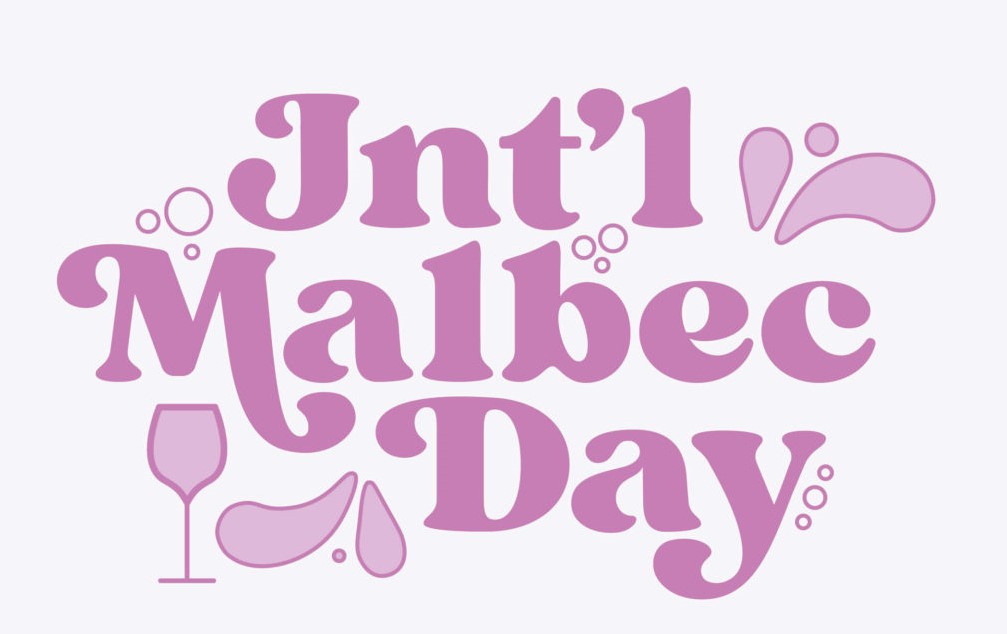 In the world of wine, certain grape varieties hold a special place, not just for their taste but also for their cultural significance. One such grape is Malbec, celebrated annually on April 17th as Argentina's National Malbec Day. This date commemorates the day when the Argentine president Domingo Faustino Sarmiento tasked Michel Aimé Pouget, a French agronomist, with bringing new grape varieties to Argentina in 1853. Little did they know that this decision would lead to the rise of Argentina as one of the world's foremost producers of Malbec wines.
In the world of wine, certain grape varieties hold a special place, not just for their taste but also for their cultural significance. One such grape is Malbec, celebrated annually on April 17th as Argentina's National Malbec Day. This date commemorates the day when the Argentine president Domingo Faustino Sarmiento tasked Michel Aimé Pouget, a French agronomist, with bringing new grape varieties to Argentina in 1853. Little did they know that this decision would lead to the rise of Argentina as one of the world's foremost producers of Malbec wines.
The Malbec Grape:
Originally from France, particularly the Bordeaux region, Malbec found its true home in the high-altitude vineyards of Argentina. It thrives in the sunny, dry climate of the Andean foothills, producing wines that are rich, robust, and full of character. The grape's thick skins result in wines with deep color and intense flavors, often characterized by notes of dark fruits, plum, blackberry, and hints of spice.
Argentina's Malbec Renaissance:
For many years, Malbec was primarily used as a blending grape in Bordeaux wines. However, in Argentina, it has been given the spotlight it deserves, becoming the country's signature grape variety. The Malbec renaissance in Argentina began in the late 20th century when winemakers started to focus on producing high-quality, single-varietal Malbec wines. Today, Argentina is the largest producer of Malbec in the world, with regions like Mendoza leading the charge.
Mendoza: The Heart of Argentine Malbec:
Situated at the foothills of the Andes Mountains, Mendoza is the beating heart of Argentina's wine industry and the epicenter of Malbec production. Its diverse terroir, ranging from high-altitude vineyards to sun-drenched plains, provides the perfect conditions for growing Malbec grapes with exceptional depth and complexity. Wineries in Mendoza craft a wide range of Malbec wines, from fruit-forward and approachable styles to bold and age-worthy expressions that rival the finest wines of Bordeaux.
Exploring Argentine Malbec:
One of the joys of Argentine Malbec is its versatility. Whether you're savoring a glass on its own or pairing it with food, there's a Malbec for every occasion. Its smooth tannins and vibrant acidity make it an excellent match for a variety of dishes, from juicy steaks and grilled meats to hearty pasta dishes and tangy cheeses. Additionally, Malbec's affordability makes it accessible to wine lovers around the world, offering exceptional quality at a reasonable price point.
Beyond Mendoza: Exploring Malbec Diversity:
While Mendoza may be synonymous with Malbec, Argentina's Malbec landscape extends far beyond its borders. Regions like Salta, San Juan, and La Rioja also produce outstanding Malbec wines, each with its own unique expression shaped by local terroir and winemaking techniques. These regions offer wine enthusiasts the opportunity to explore the diversity of Argentine Malbec and discover new expressions of this beloved grape.
In conclusion, as we raise our glasses on April 17th to celebrate Argentina's National Malbec Day, let's toast to the rich history, vibrant flavors, and enduring legacy of Malbec. From its humble origins in France to its triumphant reign in the vineyards of Argentina, Malbec has captured the hearts of wine lovers around the world. So, whether you're enjoying a bottle of Mendoza Malbec with friends or embarking on a tasting journey through Argentina's diverse wine regions, take a moment to savor the beauty of this noble grape and the culture it represents. Salud!
Vinitaly: Celebrating Italy's Rich Wine Heritage
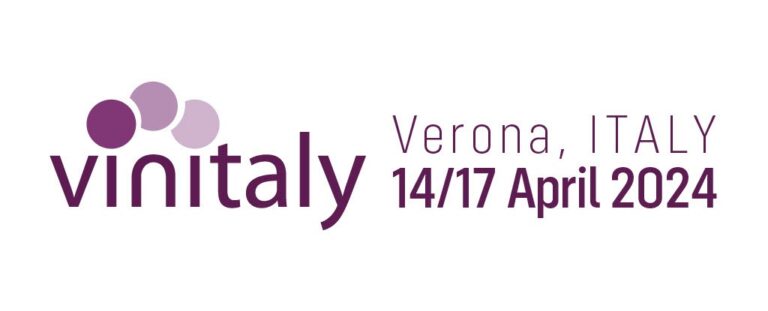 Yesterday April 14th, the 56th edition of Vinitaly took off at the Verona Exhibition Center in the charming town of Verona. Over 4,000 wineries from Italy and 30 other countries will participate to the convention, showcasing the diversity and richness of Italian winemaking. This year’s 56th edition expects to host over 30,000 operators from 140 countries, underscoring its significance as a global platform for the wine industry.
Yesterday April 14th, the 56th edition of Vinitaly took off at the Verona Exhibition Center in the charming town of Verona. Over 4,000 wineries from Italy and 30 other countries will participate to the convention, showcasing the diversity and richness of Italian winemaking. This year’s 56th edition expects to host over 30,000 operators from 140 countries, underscoring its significance as a global platform for the wine industry.
Vinitaly stands as a testament to Italy's esteemed wine culture and rich heritage. Since its inception, this renowned wine fair has been a cornerstone event for industry professionals and enthusiasts alike. Let's delve into the history of Vinitaly and its significance in showcasing Italy's diverse wine landscape.
1. Origins and Evolution:
- Vinitaly traces its roots back to 1967 when it was founded by Italian wine journalist and critic, Giuseppe Mazzotti.
- Initially held in the historic city of Verona, Vinitaly aimed to promote Italian wines on a global stage and facilitate trade connections.
- Over the years, Vinitaly has evolved into the world's largest wine exhibition, attracting exhibitors, buyers, and wine lovers from around the globe.
2. Showcasing Italy's Wine Diversity:
- Vinitaly serves as a platform for Italian wineries to showcase their diverse array of wines, from iconic classics to innovative newcomers.
- The event features tastings, seminars, and workshops highlighting regional specialties, indigenous grape varieties, and emerging trends in the Italian wine industry.
- With over 4,000 exhibitors and tens of thousands of visitors annually, Vinitaly offers a comprehensive overview of Italy's wine heritage and craftsmanship.
3. Educational Opportunities:
- Vinitaly provides invaluable educational opportunities for industry professionals and consumers alike.
- Visitors can participate in guided tastings led by renowned sommeliers, explore masterclasses on specific wine regions or varietals, and engage with experts to deepen their understanding of Italian wine culture.
- Through its educational initiatives, Vinitaly fosters knowledge exchange and promotes appreciation for Italy's diverse wine offerings.
4. Global Impact:
- Vinitaly's influence extends far beyond the borders of Italy, shaping trends and perceptions in the global wine market.
- The event serves as a crucial networking hub for wine professionals, facilitating trade agreements and international collaborations.
- Vinitaly's role in promoting Italian wine culture contributes to Italy's reputation as a world-class wine-producing nation.
5. Vinitaly Today:
- Today, Vinitaly continues to uphold its legacy as a premier wine event, showcasing the best of Italian wine to the world.
- The annual fair remains a highlight on the wine industry calendar, attracting enthusiasts, professionals, and media from across the globe.
- Vinitaly's commitment to promoting Italian wine excellence ensures its ongoing relevance in an ever-evolving wine landscape.
In conclusion, Vinitaly stands as a beacon of Italy's wine culture, celebrating the nation's rich heritage and diverse terroir. From its humble beginnings to its current status as the world's leading wine exhibition, Vinitaly remains a testament to Italy's enduring passion for wine. As we raise our glasses to toast the success of Vinitaly, let us also raise awareness and appreciation for Italy's exceptional wines. Salute to Vinitaly and the vibrant tapestry of Italian wine!
Exploring Italy's Sparkling Wines: The Charm of Metodo Classico
Italy's sparkling wines, crafted using the traditional Champenoise method, offer a delightful alternative to Champagne. Known as Metodo Classico, this technique produces sparkling wines of exceptional quality and elegance. Let's embark on a journey to discover the allure of Italy's Metodo Classico sparkling wines.
1. Understanding Metodo Classico:
- Metodo Classico, also known as the traditional method or Champenoise method, involves a secondary fermentation in the bottle.
- This process creates fine bubbles and imparts complexity to the wine, resulting in a refined and harmonious taste profile.
- The meticulous attention to detail throughout the production ensures that Metodo Classico wines rival their French counterparts in quality and prestige.
2. Regions and Varieties:
- Italy boasts several regions renowned for producing Metodo Classico sparkling wines, each offering unique expressions.
- Lombardy's Franciacorta, Trentino's Trento DOC, and Piedmont's Alta Langa are among the most prominent regions for Metodo Classico production.
- Varieties such as Chardonnay, Pinot Noir, and Pinot Blanc thrive in these regions, contributing to the diverse flavor profiles of Italian sparkling wines.
3. Franciacorta: Italy's Champagne Alternative:
- Franciacorta, located in Lombardy, is often referred to as the "Champagne of Italy."
- Its cool climate and limestone-rich soils provide optimal conditions for growing grapes used in Metodo Classico production.
- Franciacorta wines are characterized by their finesse, complexity, and remarkable aging potential, making them a favorite among connoisseurs worldwide.
4. Trento DOC: Elegance from the Dolomites:
- Trento DOC, nestled in the Trentino-Alto Adige region, produces Metodo Classico wines against the backdrop of the Dolomites.
- The mountainous terrain and continental climate contribute to the freshness and vibrancy of Trento DOC sparkling wines.
- With a focus on indigenous varieties like Chardonnay and Pinot Noir, Trento DOC wines showcase the region's terroir and winemaking expertise.
5. Alta Langa: Piedmont's Hidden Gem:
- Alta Langa, situated in Piedmont, is renowned for its high-altitude vineyards and limestone soils.
- This lesser-known region specializes in Metodo Classico sparkling wines crafted from traditional grape varieties.
- Alta Langa wines captivate with their elegance, complexity, and distinctive character, reflecting the unique terroir of the area.
In conclusion, Italy's Metodo Classico sparkling wines offer a captivating alternative to Champagne, showcasing the country's rich winemaking heritage and diverse terroir. Whether it's the refined elegance of Franciacorta, the alpine charm of Trento DOC, or the hidden gem of Alta Langa, each region contributes to Italy's sparkling wine tapestry. Embrace the allure of Metodo Classico and indulge in the exquisite flavors of Italian sparkling wines. Salute!
Deciphering Champagne: Big House vs. Grower
Champagne has long held a special place in the hearts of American revelers, with well-known big-house brands like Veuve Clicquot, Moët & Chandon, and Dom Perignon gracing occasions from high-profile weddings to exclusive VIP lounges and glittering New Year’s Eve celebrations across the nation. While these renowned labels have their charm, a growing number of Champagne enthusiasts are turning their attention to the nuanced experience offered by grower Champagne – a choice that embodies intimacy, authenticity, and uniqueness.
To grasp the essence of this evolving trend, let's explore the distinctions between Champagne houses and grower Champagne. Big houses, often referred to as “maisons” or “Grandes Marques,” are expansive enterprises that produce Champagne using grapes sourced from both their own vineyards and those owned by growers throughout the Champagne region. With a substantial workforce across the 370 big houses in Champagne, each vineyard's grapes undergo separate vinification processes, followed by blending to create the distinctive taste profile associated with the brand. Big-house Champagne constitutes approximately 85 percent of total Champagne exports globally and is readily available at grocery stores and wine shops in the U.S. In contrast, Grower Champagne represents a smaller share, around 15 percent of exports, and while gaining popularity beyond France, it can be a rare find in the U.S. Grower Champagne is crafted by individuals who not only produce the grapes but also cultivate the vines. Out of over 16,200 growers in Champagne, fewer than 5,000 produce their own Champagne, utilizing grapes from their own land. These small, family-run enterprises produce limited quantities of wine, employing methods passed down through generations.
Champagne Region, situated about 100 miles northeast of Paris, is characterized by a unique Terroir that boasts mineral-rich soil, remnants of an ancient marine bed, and a distinctive dual climate. The oceanic climate brings consistent rainfall and moderate seasonal temperatures, while the continental climate offers summertime sun but often brings harsh winter frosts. While all Champagne leverages this diverse terroir, grower Champagne places it at the forefront.
Unlike big houses that blend wines to achieve a consistent product, growers embrace their unique environment, nurturing what nature provides through sustainable and biodynamic practices. The resulting wine is distinctive and reflective of the individual vineyard where the grapes are cultivated.
Growers reprsent the tue hands-on craftsmanship. They have complete control over every stage of the Champagne-making process – from growing and harvesting grapes to blending, deciding whether to blend, and determining any dosage added to let the grapes' natural qualities shine. With meticulous attention, they monitor the wine's quality throughout, ensuring that the bubbles in the glass are of the utmost excellence.
While these carefully cultivated and crafted grower Champagnes may be challenging to find, they hold a unique allure. Each bottle narrates its own story, embodying the origin and craftsmanship behind its creation. While big-house bubbles may suit some, those in the know are reaching for the distinct and authentic experience offered by grower Champagne. Cheers to the journey of discovery in every sip!
Veuve Clicquot: an Extraordinary Trailblazer in Champagne History
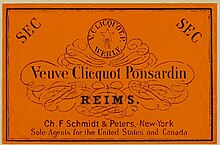
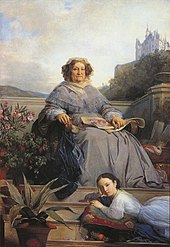
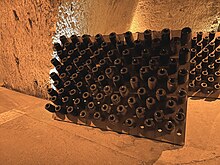
Hello! In honor of Women's History Month, I wanted to dedicate this blog to the remarkable story of Madame Clicquot, a true pioneer in the world of Champagne.
Madame Clicquot, born Barbe-Nicole Ponsardin in 1777, became a widow (veuve in French) at the age of 27 when her husband, François Clicquot, founder of a Champagne house based in Reims, passed away in 1805. Instead of handing over the reins to a male relative, as was the tradition at the time, she took control of the family Champagne business and on 21 July 1810, she named it Veuve Clicquot Ponsardin.
In the early 19th century, the Napoleonic Code denied women civil and political rights, prohibiting them from working, voting, earning money, or entering schools and universities without the consent of their husband or father. At that time, widows were the only women in French society to be free and to be allowed to run their own business.
One of Madame Clicquot's most significant contributions was the development and refinement of the riddling process, which is a crucial step in the production of sparkling wine. Riddling involves gradually tilting and turning bottles to allow sediment to collect in the neck for later removal. This technique significantly improved the clarity and quality of Champagne. Prior to her innovations, Champagne production faced challenges with sediment and clarity. Madame Clicquot's method of turning and tilting bottles facilitated the removal of sediment, resulting in clearer and more refined Champagne.
Madame Clicquot is credited with creating the first known single-vintage champagne in 1810. The concept became a huge success the following year when the iconic 1811 vintage champagne was labeled 'The Year of the Comet'. Today, vintage champagne is considered one of the highest-quality types of champagne and is highly sought after by collectors and champagne enthusiasts alike. Eight years later, she invented the first known blended rosé champagne by blending still red and sparkling white wines, a process still used by the majority of champagne producers.
Under Madame Clicquot's leadership, Veuve Clicquot expanded its global presence, gaining popularity not just in France but notably in Russia, where she became renowned after the Russians celebrated with her champagne the defeat of Napoleon. Subsequently, Madame Clicquot strategically extended her reach to other key markets, including the United Kingdom. Edouard Werlé, upon joining the company, embarked on numerous journeys throughout Central Europe. From 1841 onward, when Edouard Werlé officially assumed leadership, annual sales consistently exceeded 300,000 bottles. By 1850, the company achieved the sale of 400,000 bottles.
In the subsequent years, Edouard and his son Alfred played pivotal roles in advancing the business. They expanded by acquiring new vineyards and, in a bold move, introduced a yellow label for their wines in 1877 – an unconventional choice for champagne at that time. This distinctive label, registered under the trademark "Veuve Clicquot Ponsardin" Yellow Label, became iconic.
Madame Clicquot passed away at the Château de Boursault on July 29, 1866, at the age of 89. At the time of her passing, annual sales had soared to 750,000 bottles. Veuve Clicquot had become a major Champagne house and a revered brand, exporting its champagne from France to Europe, the United States, Asia, and beyond.
Recognized by her peers as "la Grande Dame of Champagne" newspapers worldwide paid homage to Madame Clicquot. Her remarkable story stands as a testament to her entrepreneurial spirit, unwavering determination, and innovative vision. Madame Clicquot's legacy continues to be celebrated in the realm of Champagne and extends as an inspiration beyond.
In 2001, Cecile Bonnefond became the first female president of Veuve Clicquot since the widow herself was running the company.
Chianti Classico Collection 2024 - Stazione Leopolda, Florence
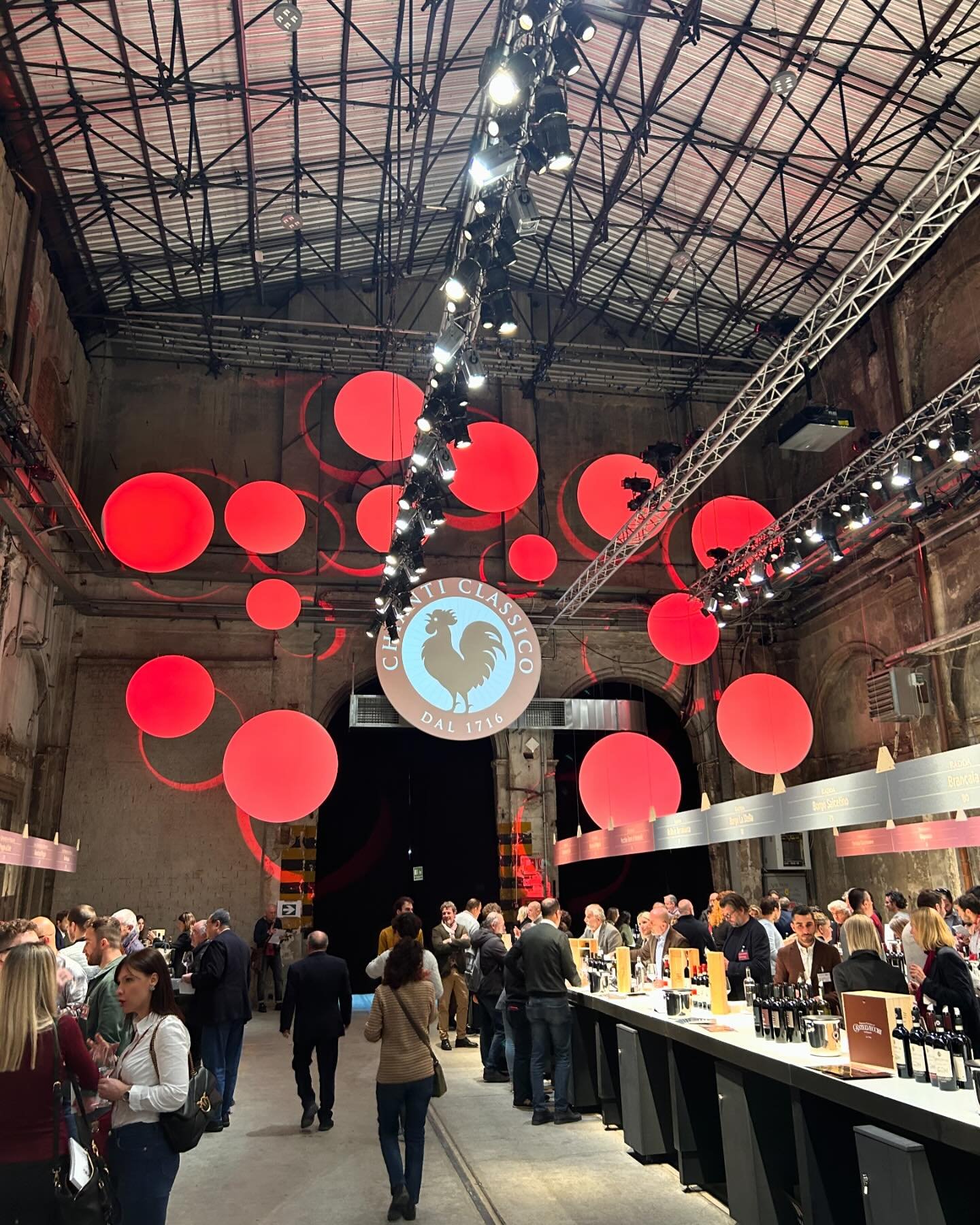 The Black Rooster Consortium, officially known as the Consorzio Vino Chianti Classico, is an organization that oversees and promotes the production of Chianti Classico wine. Chianti Classico is a renowned wine region in Tuscany, Italy, known for its high-quality red wines.The Black Rooster symbol* is an iconic emblem associated with Chianti Classico wines.
The Black Rooster Consortium, officially known as the Consorzio Vino Chianti Classico, is an organization that oversees and promotes the production of Chianti Classico wine. Chianti Classico is a renowned wine region in Tuscany, Italy, known for its high-quality red wines.The Black Rooster symbol* is an iconic emblem associated with Chianti Classico wines.
The Consortium plays a crucial role in regulating and safeguarding the production of Chianti Classico wines. It establishes quality standards, promotes the reputation of Chianti Classico, and ensures that wines labeled as such adhere to specific guidelines, including the use of Sangiovese grapes.
The Consortium also organizes events, such as the "Chianti Classico Collection", to showcase and celebrate the wines of the region. Additionally, it works to preserve the historical and cultural heritage associated with Chianti Classico, contributing to the region's continued success and recognition in the world of wine.
The Chianti Classico Collection consists of two days dedicated to showcase wines from the Chianti Classico region and provides an opportunity for wine producers to present their products to the public, including wine enthusiasts, professionals, and journalists. The event is held at Stazione Leopolda**, which is a historic venue in Florence, Italy, known for hosting various events and exhibitions.
The 2024 Chianti Classico Collection spanned from February 15, 2024, which marked the opening to journalists and operators, to February 16, 2024, when the event opened its doors to the public.The new vintages of the renowned Gallo Nero wines were presented by their prestigious producers. It was a unique opportunity to meet more than 200 producers and taste more than 700 signature Gallo Nero labels, including Chianti Classico Vintages, Riserva and Gran Selezione, Vin Santo del Chianti Classico and Olio DOP Chianti Classico.
The Chianti Classico region confidently navigates the challenging waters of the wine market, riding on its unspoiled beauty, growing reputation, and increasingly acknowledged quality, exemplified by the inclusion of seven regional wines in the "Top 100" of 2023 by "Wine Spectator". The area has achieved a higher standing in markets, with an average price surge of 7% in 2023 compared to 2022 and 13% compared to 2021. This positive trend is attributed, in part, to the influential impact of the "Gran Selezione," the pinnacle of the Chianti Classico quality hierarchy. With the 2023 vintage, the Additional Geographical Units have been incorporated into the label of the Gran Selezione.
Despite a general decline in consumption and sales, particularly for red wines, the Black Rooster territory maintains a sense of tranquility and concrete optimism. Giovanni Manetti, president of the Black Rooster Consortium, which is commemorating its first century, shared insights during the 2024 "Chianti Classico Collection" at the Stazione Leopolda in Florence. Reflecting on a challenging 2023 in both markets and vineyards, Manetti notes a lower production volume but emphasizes the exceptional quality. The Consortium celebrates its centenary with the "Chianti Classico Century" exhibition, hosted at the Stazione Leopolda in Florence, showcasing the Consortium's first 100 years through the perspectives of its presidents.
Chianti Classico, recognized as one of the most significant wine regions globally, has been instrumental in teaching the art of creating value in the realm of Made in Italy. Mirko Carloni, Chairman of the Agriculture Commission at the Chamber of Deputies, emphasized this achievement, pointing out that the Consortium has been a guiding force for a century. The region encompasses 6,800 hectares of vineyards out of a total of 70,000, with 486 producers, 345 of whom contribute to the entire supply chain. Together, they produce an annual average of 35-38 million bottles, reaching 160 countries worldwide, with the United States, Italy, and Canada leading the way. This thriving wine district holds a significant economic value, estimated to be around 1 billion euros, with wine serving as a pivotal factor in this remarkable achievement.
The US, having experienced a notable surge in Black Rooster sales in 2022, maintains its leading position once again, with 35% of Chianti Classico bottles finding a market in the U.S. In 2024, the Consortium has strategic plans for marketing and communication initiatives targeted specifically at the United States. A high-profile event is scheduled to take place at the end of April in New York City, showcasing the commitment to further promote and strengthen the presence of Chianti Classico wines in the American market.
The director Carlotta Gori emphasized: "This year, the overarching theme for all our marketing and communication endeavors revolves around the Centenary celebration of our Consortium, the oldest in Italy"; and Mr Manetti added: "In 1924, 33 visionary winemakers came together with a shared mission, laying the foundation for the Consortium. A century later, our Consortium boasts 500 members, yet the core objectives remain unchanged. We are dedicated to safeguarding the wines originating from this highly esteemed and exceptionally beautiful terroir. Our aim is to support winemakers as they navigate global markets united under the emblem of the Black Rooster".
Delfino Fine Wines takes great pride in offering Chianti Classico and Chianti Classico Riserva, both unequivocally recognized as some of our finest offerings in terms of quality and value. Our esteemed producers, Cantine Guidi 1929, founded in the year 1929, represent a fourth-generation winery that has flourished over the years, firmly establishing its commitment to the high standards and traditions of Chianti Classico winemaking. We invite you to experience the excellence of these remarkable wines firsthand by joining us at our tasting room. Cheers to the rich legacy and exceptional craftsmanship embodied in every bottle!
*The Black Rooster symbol is an iconic emblem associated with Chianti Classico wines. Legend has it that during the medieval rivalry between Florence and Siena, they decided to settle the dispute over their borders. Each city chose a knight on horseback to start riding at the crowing of the rooster. Wherever they met would determine the new border. The people of Florence selected a black rooster and kept it without food for several days to make it crow louder. The black rooster crowed earlier, and Florence expanded its territory. Since then, the Black Rooster has become a symbol of Chianti Classico.
** Stazione Leopolda was built in the 19th century during the reign of Grand Duke Leopold II of Tuscany. The architectural design is attributed to Giovanni Alessandro Ricasoli and Alessandro Manetti. The building served as a railway station for a significant period. However, as train transportation needs evolved, the station ceased its original function. In the latter part of the 20th century, Stazione Leopolda underwent adaptive reuse, transforming into a versatile venue for various events. Stazione Leopolda is now a popular space for hosting events such as fashion shows, art exhibitions, trade fairs, cultural festivals, and more. The venue's vast interior, unique architecture, and historical charm make it an attractive location for a variety of gatherings.
Indulge in a Decadent Event of Love and Flavors this Valentine’s Day
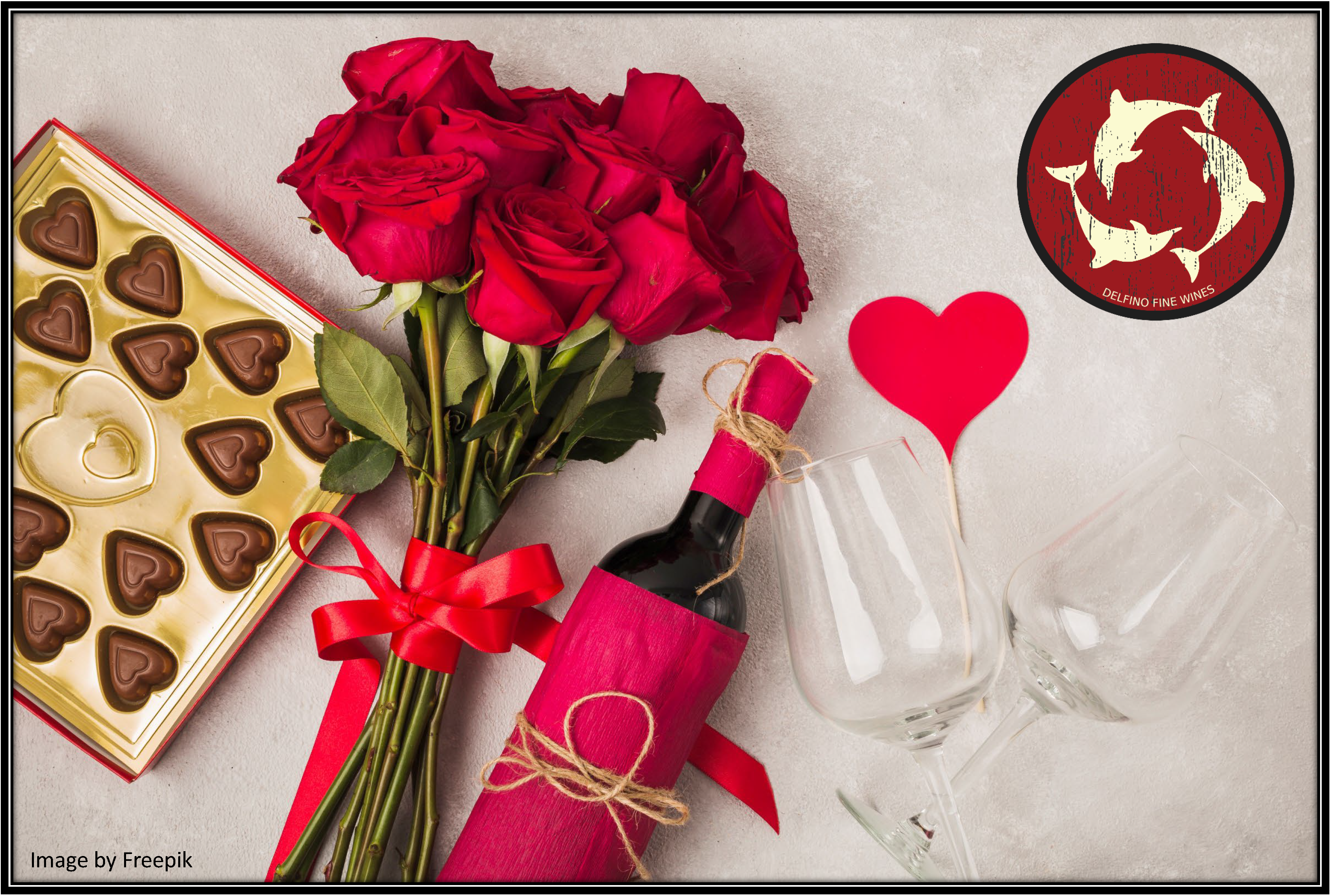
Love is in the air, and what better way to celebrate Valentine's Day than with a curated selection of exquisite wine and chocolate pairings? Let's embark on a journey of flavors that will elevate your romantic celebration and create lasting memories.
- Sparkling Brut Rosé and Chocolate-Covered Strawberries:Begin your evening with the timeless and elegant pairing of Sparkling Brut Rosé and luscious chocolate-covered strawberries. The effervescence of a dry Brut Champagne complements the juiciness of the strawberries, creating a classic and sophisticated combination that sets the tone for a night of romance.
- Pinot Noir and Chocolate-Covered Cherries:For a refreshing and indulgent experience, delve into the world of Pinot Noir paired with chocolate-covered cherries. The bright acidity and red fruit flavors of Pinot Noir perfectly balance the tartness of the cherries, offering a delightful interplay of flavors that dance on your palate.
- Syrah and Spiced Chocolate:Indulge in the harmonious fusion of Syrah and spiced chocolate. Syrah's bold and robust profile, featuring distinctive peppery and spicy notes, complements the rich and indulgent flavors of spiced chocolate. This pairing promises a flavorful experience that tantalizes the senses.
- Taurasi and Dark Chocolate-Covered Oregon Hazelnuts:Elevate your celebration with the bold and complex Taurasi, revealing notes of dark fruit, black cherry, plum, and a unique chocolate essence. Paired with dark chocolate-covered Oregon hazelnuts, this combination harmonizes intense and intricate flavors, creating a sophisticated and balanced union.
- Ruby Port and Chocolate Truffles:Conclude your romantic affair with the luxurious pairing of ruby Port and chocolate truffles. The rich and decadent nature of chocolate truffles finds a perfect companion in the fruity and fortified characteristics of a ruby Port, culminating in a sumptuous and indulgent finale.
As you raise your glasses to a night of love and connection, savor each moment of this romantic and indulgent affair. Cheers to creating beautiful memories on this special Valentine's Day!
You know you want to
Sign Up For Our Newsletter
Keep up to date on the latest wine releases, events and promotions.